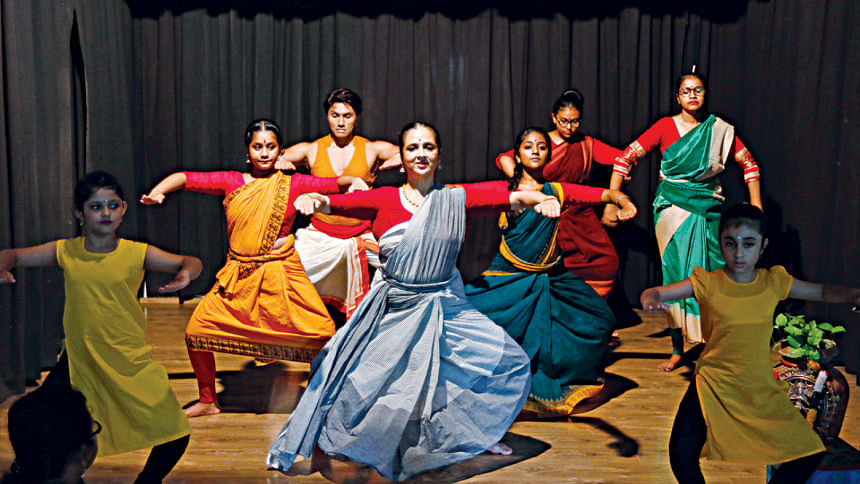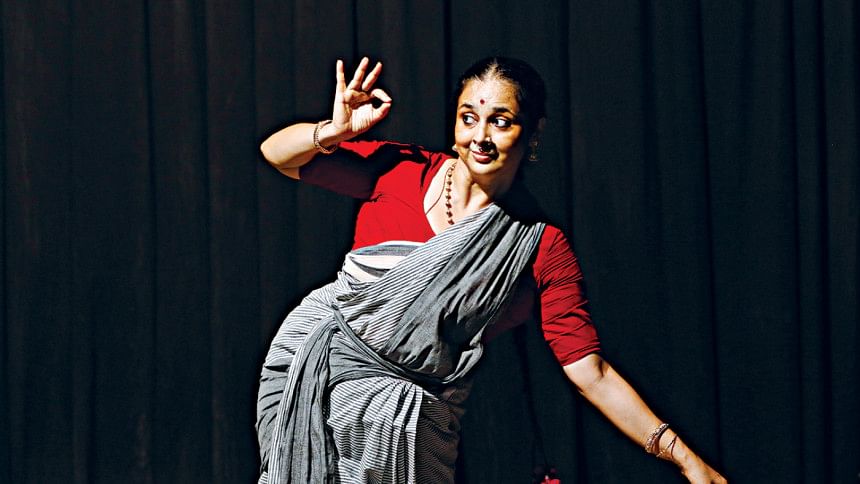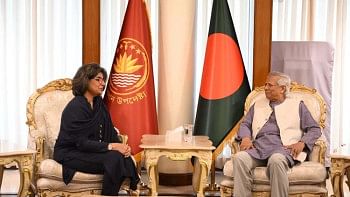In conversation with Sharmila Biswas

Odissi dance virtuoso and Sangeet Natak Akademi Award recipient Sharmila Biswas is inarguably one of India’s top Odissi exponents. A disciple of Guru Kelucharan Mohapatra, Sharmila Biswas has performed extensively in a number of his productions, both in India and abroad. The ever so magnificent Odissi danseuse recently came to Bangladesh to conduct a three-day long workshop at one of the country’s leading dance schools, Kolpotoru. On the concluding day of the workshop, The Daily Star caught up with the artiste for a quick chat on her teaching experience in Dhaka and more.
First things first. What has the experience been like conducting this workshop at Kolpotoru?
It was a wonderful experience. Working with the team at Kolpotoru has been inspiring. Every member here stands testament to Lubna Ji’s vision behind the school, which is to train dancers from the ground up under the guidance of reputed Gurus and subsequently provide them a platform for performing in feature-length productions with the dance company, Shadhona.

In your opinion, what are some of the biggest challenges that aspiring Indian classical dancers face today, in terms of learning, practicing or even considering performing arts as a full-time career path?
I think the first challenge they face is finding a good teacher, because most academic institutions do not possess the infrastructure required to provide Indian classical dance and music lessons since it is a system that is still predominantly gurukul-based. Often, young children are also misguided and resort to taking lessons from inexperienced teachers. The second challenge I believe is arranging finances and receiving their family’s support. Classical music and dance require investing years of time and effort into learning the art form first and for that, it is imperative to have a strong support system to consider it as a full-time career path.
What do you think can be done by Indian classical dancers to ensure patronage, or at least measures for sustenance in some cases, so that they can pursue their careers without woe or worry?
As the first rule of thumb, I think we, performing artistes collectively, should stop performing for free. We are causing grave harm to ourselves in doing that as it distorts the industry’s economic structure. Having said that, chasing down finances while preparing for a show can take away the attentiveness from the art itself. I personally do not take sponsorships for shows. If a performance is worth the audience’s evening, I am sure they can and will buy tickets to enjoy the show. So, I think understanding the economics of the industry and using that knowledge strategically to work for money can ensure financial stability for the dancers.
Do you feel hopeful about the future of dance, particularly Indian classical dance, in both Bangladesh and India?
Yes, absolutely. Art lies in the very roots of both the nations and, music and dance play a big role in the people’s lives. They are instinctively drawn to performing arts and I believe there is a great future ahead for dance itself, and of course, Indian classical dance as well. I don’t think there will ever be a time when there is no dance and music in either Bangladesh or India.

 For all latest news, follow The Daily Star's Google News channel.
For all latest news, follow The Daily Star's Google News channel. 



Comments